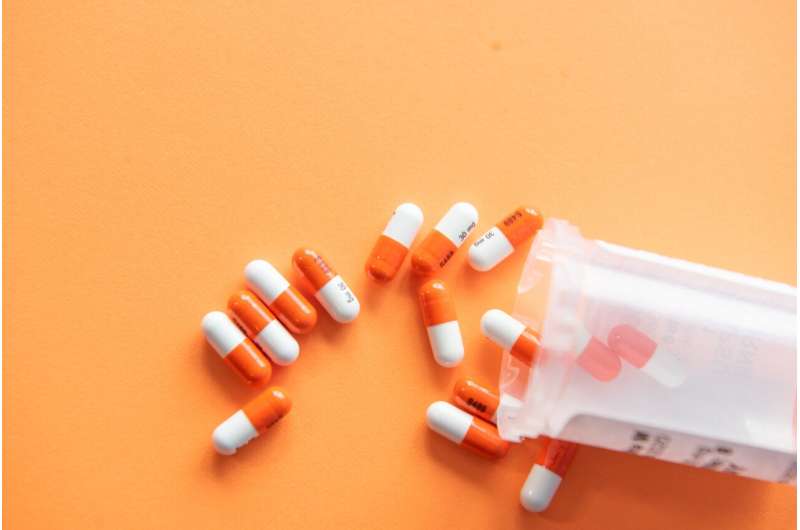

Contaminants in generic medications used to treat conditions like diabetes, heart disease, stomachaches and heartburn may cause damage to DNA, affect basic cell functions and even increase a person’s risk of cancer, according to a new UBC study.
“When we take these drugs, we do so knowing that they can come with side effects that are clearly described on the drug label. But what we don’t expect is that our medicine cabinet may be full of toxins that can actually make us sick—or kill us,” says Dr. Corey Nislow, commenting on the findings by researchers at his lab at UBC’s faculty of pharmaceutical sciences.
People need to be especially vigilant regarding the contaminant N-nitrosamine—a nitrogen group attached to an amine group—considered a dangerous combination because amines will react with anything in a cell, while nitrogen groups can stall cell processes, explains Dr. Nislow.
First author and Ph.D. candidate Uche Joseph Ogbede says that for the first time they could see the effects of nitrosamines on cells, which opens the potential for solutions to lessen toxicity.
Nitrosamines were first noticed as an impurity in heart medications which also often have valsartan or losartan as active ingredients. Since 2018, this type of toxin has led to multiple contamination recalls by both Health Canada and the U.S. Food and Drug Administration (FDA). They can be found in generics as early as 2012 and nitrosamines are now found in many different types of medications.
Although there have been no severe consequences or deaths documented from short-term intake, Dr. Nislow is concerned about the long-term effects. “We lack good data on this and the long-term consequences are a big unknown,” he notes.
Generic medications are produced at a lower cost overseas and bought in larger quantities, Dr. Nislow says, and they are more widely used than their branded versions, which have higher quality control but are more expensive to produce.
“It’s easy to assume that generic medication for common conditions is equivalent to the branded version, but in reality, they could be made with entirely different ingredients,” explains Dr. Nislow.
These contaminants are found in hundreds of millions of generic drug prescriptions, used for chronic conditions where people might use them over long periods of time.
Studying yeast for answers
The research team used a test system from Dr. Nislow’s previous yeast-based work to study the contaminants.
They screened 4,800 yeast strains with marked DNA, looking for those that were more sensitive and resistant after being exposed to the contaminants and found contaminants had significant effects on DNA repair and the machinery that makes cell proteins, which Dr. Nislow says is one of the most ancient cellular processes.
The contaminants they studied also affected the cell’s mitochondria, which would lead to adverse effects on people’s ability to efficiently convert food into energy.
“So, the very things that these drugs are being used to treat could ultimately be affected by the contaminants,” says Dr. Nislow.
Higher quality control needed
The study recommends better safety and surveillance of the supply chain for medications, in addition to more research into the long-term effects of these contaminants.
Dr. Nislow hopes that moving forward there can be more transparency with generic drugs and stronger government measures when it comes to the quality control of these drugs.
Source: Read Full Article